On 18th January the Loch Lomond and Trossachs National Park Authority (LLTNPA) issued a news release (see here) about improvements to visitor infrastructure that are underway across the National Park. This was then picked up by various media without critical comment. While new investment in visitor infrastructure is welcome, the news release failed to explain the background to these projects and said nothing about the LLTNPA’s wider lack of investment in outdoor recreation and visitor infrastructure.
The Bracklinn Falls bridge
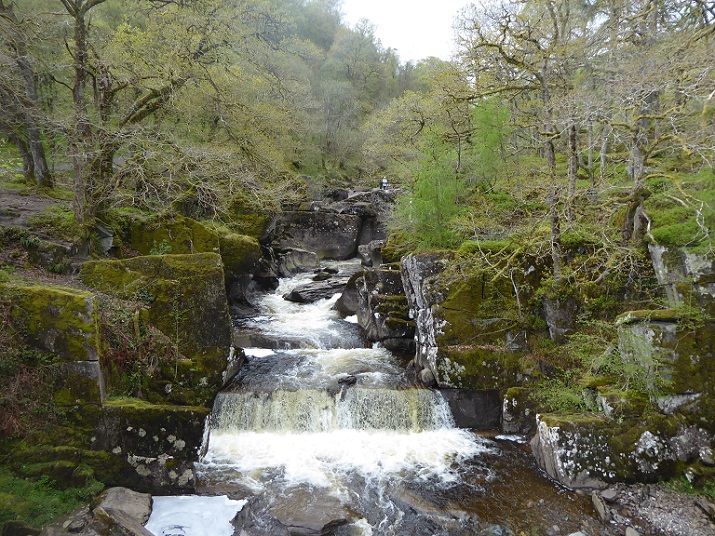
The recent history of bridges at the Bracklinn Falls above Callander puts a completely different angle on what the LLTNPA said in their news release. After a bridge was swept away c2004 the LLTNPA eventually replaced it by a new bridge in 2011. This was to much fanfare (see here) and at a cost of £110k. Ten years later in December 2021 the LLTNPA was forced to remove the “internationally commended” bridge after declaring it unsafe (see here).
Why the condition of the bridge deteriorated so quickly after construction has never been explained. Was it a failure in the specification, the use of cheap materials or a failure to maintain the bridge properly? Knowing the answers to these questions is important if the public is to have any faith in the LLTNPA’s claims that the new bridge is “built to last”.
The Bracklinn Falls are an important visitor attraction and the bridge formed part of the Bracklinn Falls Circuit promoted by the LLTNPA (see here) and also featuring on the Walk Highland website (see here). The falls are linked to the nearest car park by a core path so the LLTNPA probably had little choice but to replace the bridge. Organising this will have consumed significant amounts of staff time – applying for money, agreeing the design, appointing contractors etc – time that might have been spent on something else if the original bridge had been fit for the purpose. While in December 2021 the LLTNPA somewhat rashly announced “We plan to have a new Bracklinn Bridge in place in 2022″, staff will have done pretty well if the new bridge is in place by March 2023, three months behind schedule.
Conic Hill
The second project announced in the news release was work to repair the path up Conic Hill, a much bigger project and one that has consumed even more staff time: at the November meeting of the LLTNPA’s Local Access Forum was reported that preparing for the work had taken up most of the time of one member of staff for the last year. For a £900k project that is not unreasonable.
What the news release failed to mention was that the LLTNPA had paid for a complete upgrade to the Conic Hill path just 10 years ago in 2013.
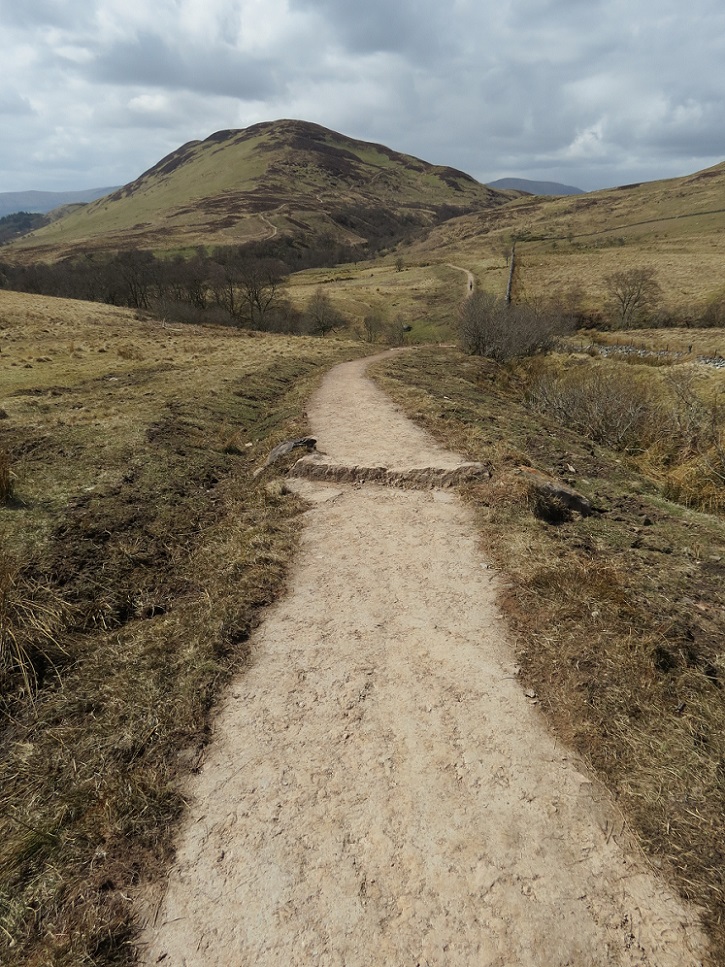
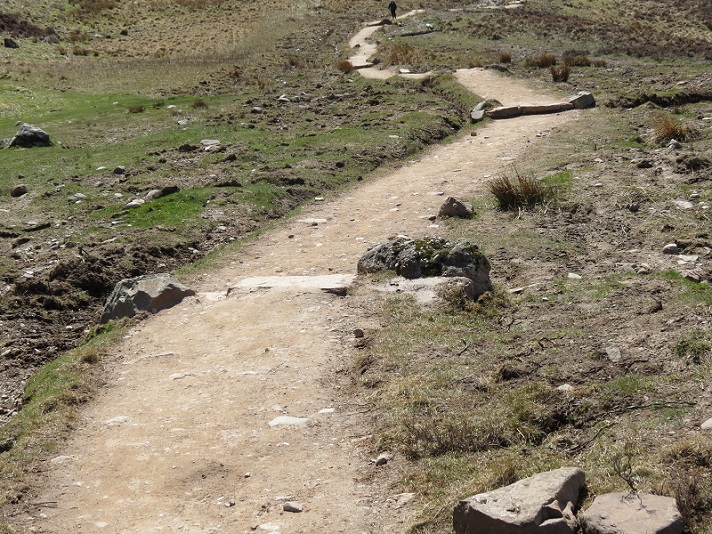
That path upgrade was done by McGowan – Highlands and Islands Enterprise’s favoured contractor at Cairn Gorm – using machines. This is a relatively cheap way to build paths as LLTNPA’s public disclosure reports on expenditure over £25k (see here) illustrate:
14–Mar–13 McGowan Outdoor Access Ltd £45,747 Path & Bridge Repair Works at Conic Hill
26–Mar–13 McGowan Outdoor Access Ltd £35,356 Path & Bridge Repair Works at Conic Hill
12–Apr–13 McGowan Outdoor Access Ltd 58,789 Path & Bridge Repair Conic Hill
(NB The total of c£140k may be an underestimate as Public Authorities to not have to declare payments under £25k but the amount is still likely to be considerably less than £900k).
The problem, however, was the path design and surface was completely unfit for purpose.

The extent of the erosion is illustrated by the cheap but ineffective plastic culverts which were left standing proud as the surface of the path was washed away. What then seems to have happened is once the burn had diverted down the path, people were forced off it in wet conditions creating the quagmire on either side.
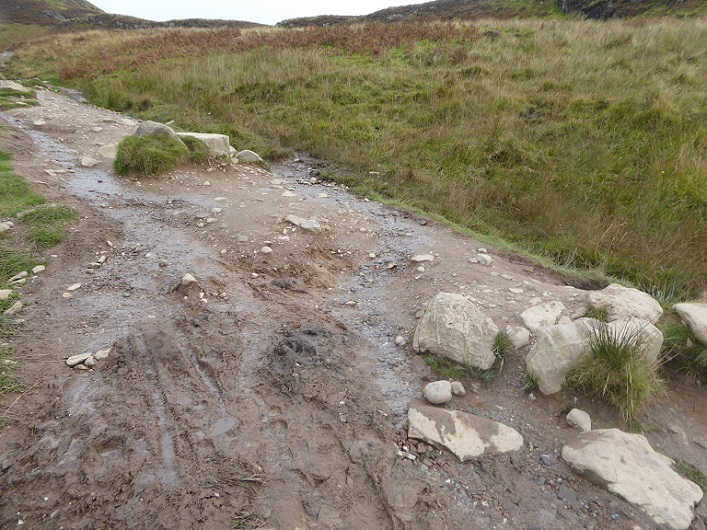
As the surface of the raised path was washed away, the occasional steps increased in height (bottom of photo) making them difficult or impossible to use. In some cases (left of photo) the steps became isolated from the path on either side and served to act as barriers. This has helped protect the raised foundations of the path between the two steps in the photo but the inadequate/poorly maintained ditch has resulted in water cutting across the raised section of path eroding out some of the “protected” foundations. A great lesson in how NOT to build a path.
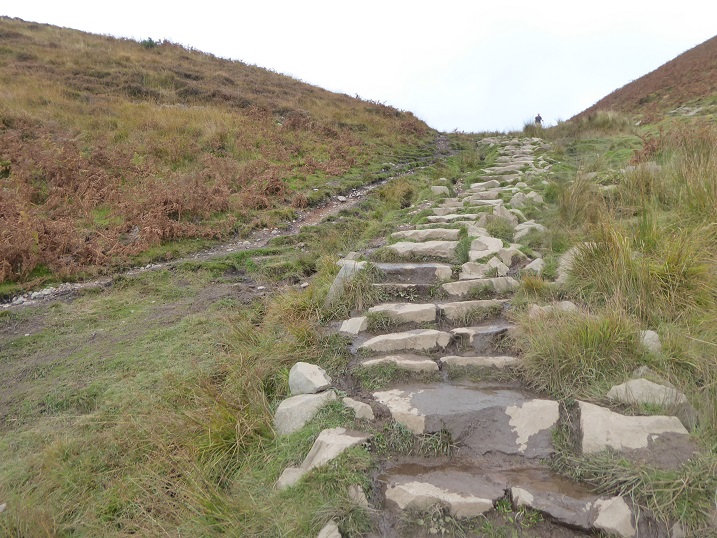
The stone pitched steps on the section of the Conic Hill path below the two photos above has survived much better. This is despite the narrowness of the path and high volume of use which makes passing people difficult and would normally force people to step onto the ground on either side (note the rocks on the right hand side designed to stop this happening). That contrasts with a lower section of stepped path:
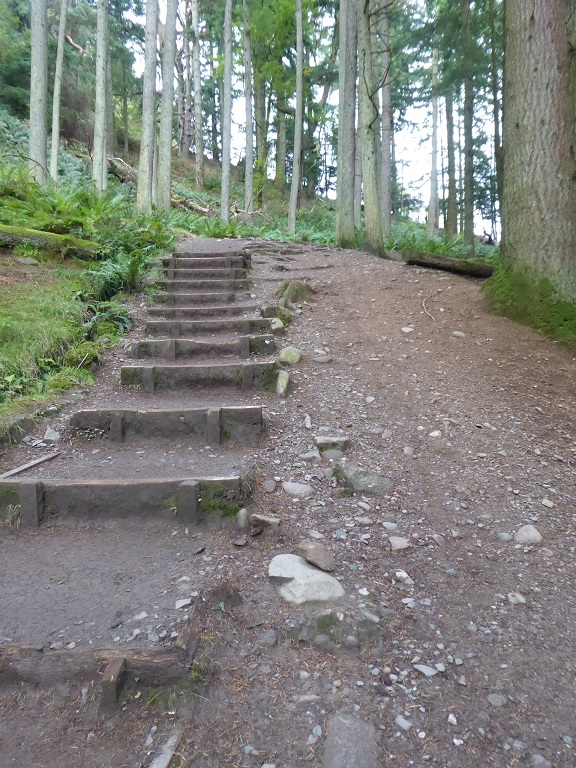
A couple of factors have helped create a new path alongside these steps: the steps are too narrow, so people have stepped aside to pass whenever they could and then, as the ground became eroded, a new path developed; the surface material between the steps has eroded away (but more slowly than on the upper sections of path) making them harder to use. Note how people have stood on the wood on the bottom step and worn it down to the level of the path surface, which in turn will help the path surface to erode away even quicker.
Most of these problems were evident soon after construction. That is probably why Conic Hill was originally included in “Mountains for People” (see here), the £6.1m heritage lottery funded programme to upgrade and maintain footpaths in Scotland’s National Parks. However, according to the Final Evaluation Report of the project (see here) the proposed work on the Conic Hill path was then “swapped out”:
“As the project developed some paths were ‘swapped out’ for various reasons relating to land management issues and/or changing priorities, with either others swapped in to replace them or funds needed for more work than budgeted on certain paths. The paths swapped out were
invariably low cost high meterage paths and the work swapped in was generally low in metres but high in value. Paths swapped out include Geal Charn from Balsporran (3,681 metres long), Glen Finglas (4,839m), Balquhidder Glen (5,577m) and Conic Hill (1,930m) which tended to
have small amounts of work spread over a long distance.”
“Invariably low cost” and “small amounts of work“? How does that fit with the planning application approved by the LLTNPA last January (see here) which showed that 1.3km of pathwork was required which we now know will cost £900k? It appears the public and the heritage lottery funders were not being told the truth. Why?
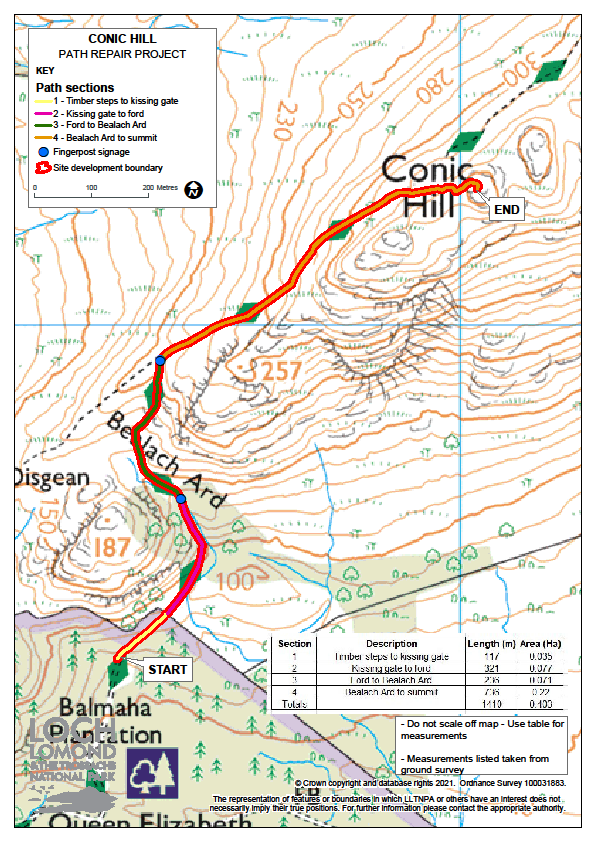
Ten years later the LLTNPA access team staff, after a lot of work, appear to have created a specification for “a quality path” on the western side of Conic Hill that may be fit for purpose: most of the path will be stone pitched, as in the steps in the photo above, creating a far more robust surface, while sections like the steps in the forest will be widened from one to two metres, reducing the numbers of walkers forced to step off path. If the work by the contractors is of a good enough quality the new path has a fair chance of surviving as long as it is regularly maintained. So far the LLTNPA has not said what arrangements will be put in place to ensure this happens.
While the claim in the LLTNPA’s news release that work on the Conic Hill path is primarily needed because of increased visitor numbers is highly questionable – poor design and inappropriate cheap construction techniques were far more important – footfall is a factor. This could be reduced by encouraging walkers to consider alternative routes up Conic Hill (as happens with small popular hills in the Lake District) instead of concentrating everyone onto one main path. That, however, would require investment in other paths and does not appear to be on the LLTNPA’s agenda.
Meantime, the public should far less confident that the “further 1.8km of path maintenance on the existing West Highland Way section from Conic Hill summit to Burn of Mar to restore surface and improve drainage” – which the LLTNPA planners deemed would not need planning permission – will be nearly sufficient to address the problems.
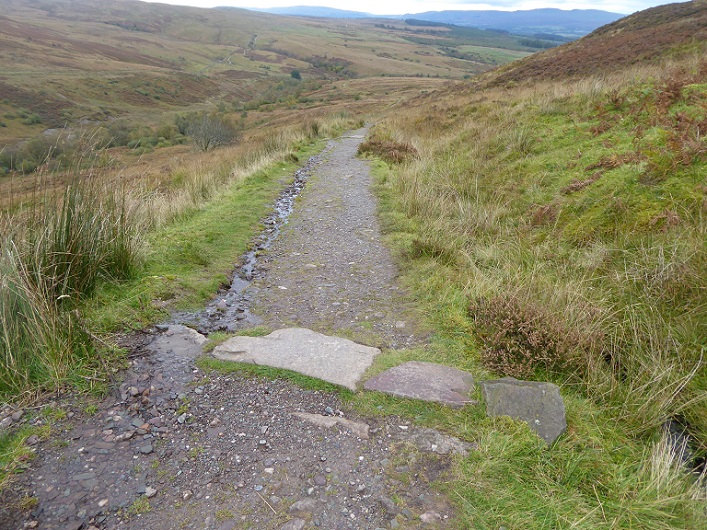
While some parts of the 2013 path work undertaken by McGowan is still intact, in other places the erosion of the West Highland Way on the east side of Conic Hill is not far behind that on the west side:
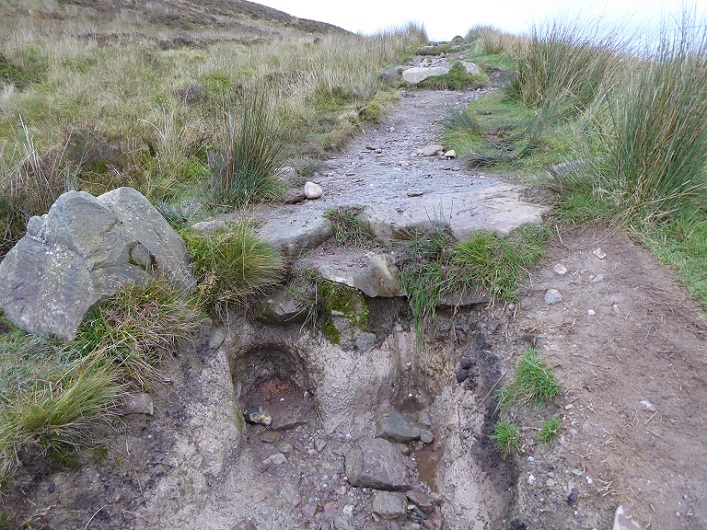
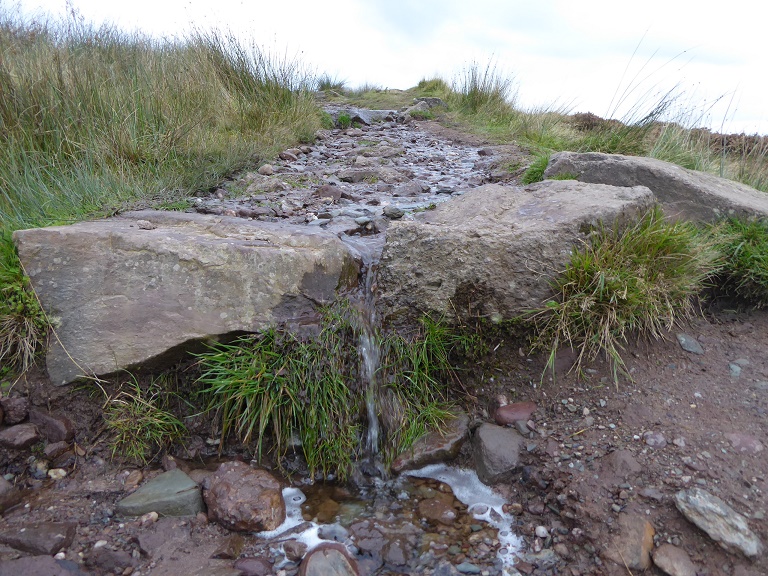

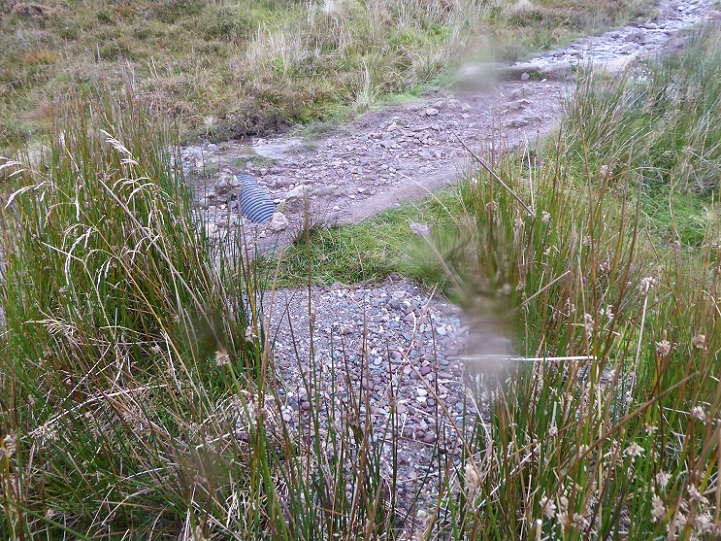
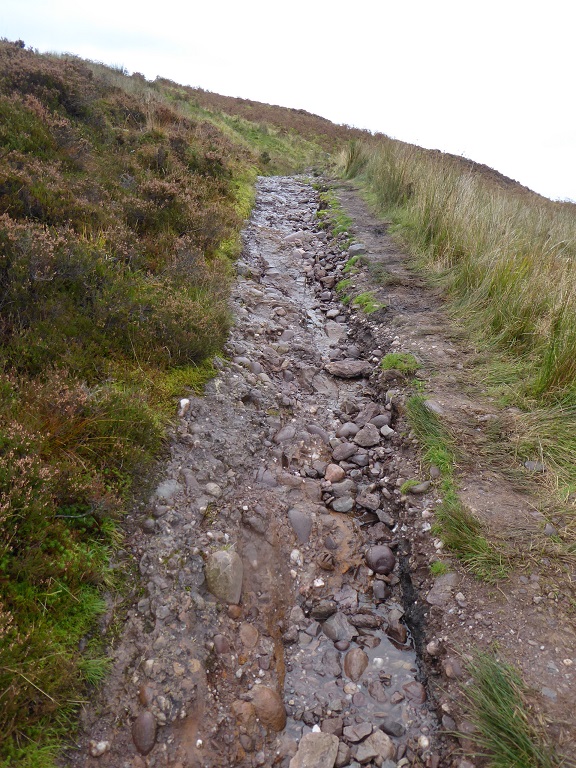
Tarbet upgrade
The third announcement in the news release was that the LLTNPA has applied for planning permission (see here) to improve visitor facilities on the land it owns at Tarbet on the west shore of Loch Lomond. I will consider the detail of the proposals in a further post. What the news release did not mention was that this piece of public land had also been included in the proposals by Moulsdale Properties Ltd in 2019 to create a large new visitor attraction at Tarbet (see here). While legally anyone can submit a planning application for another person’s land, there has never been a public report to the LLTNPA Board explaining whether staff had been a party to Mr Moulsdale’s proposal or not. It is therefore very important that this application is NOT left to staff to decide and the Board considers whether this investment, which on the face of it might look good, could end up promoting private interests rather than those of the public.
Discussion – the need for investment in visitor infrastructure in the National Park
The three investments the LLTNPA announced in their news release should be seen in the wider context: in the last year the LLTNPA have decided to disinvest from certain visitor facilities, most notably the former National Park Visitor Centre in Balloch, which they have handed back to Scottish Enterprise, and the former visitor centre at Luss which they decided to put on the market despite the interest of the local community (see here). There was no mention of these disposals of assets in the press release.
The truth is that over the last ten years the LLTNPA has flitted from one plan to another and almost never delivered what it promised. For example, the 5 Lochs Visitor Management Plan for the Trossachs – developed by Grant Moir now Chief Executive of the Cairngorms National Park – was abandoned without Board approval, while the Camping Development Strategy, in which the LLTNPA promised Scottish Ministers to add to the 300 camping places initially agreed under the camping byelaws, quickly stalled. Its the same with other proposals such as those developed by the Balloch charrette (see here). Now the LLTNPA is promising new investment under its place plans, although it decided to disinvest from its visitor centre at Luss BEFORE agreeing a plan for that area. Good reason for the public to be sceptical of everything the LLTNPA says.
In the summer the LLTNPA quietly abandoned its commitment to revise its Outdoor Recreation Plan which had been much delayed (see here). The statutory guidance accompanying the Land Reform (Scotland) Act 2003 required National Parks to develop access strategies to support the implementation of the Act and the development of core path plans. The LLTNPA now have no means to plan what infrastructure is needed for outdoor recreation, whether this is launching places to enable people to access their rights over water or paths that meet the needs of various types of outdoor recreation. That is shocking for a National Park that was created primarily to enable people to enjoy Loch Lomond and the Trossachs.
Nor does the LLTNPA have any budgets to support their access team in their outdoor recreation work. Instead, staff are asked to pursue whatever grants are being disbursed through central government. This is how the three projects in the news release appear to have been funded, as well as other projects funded by Sustrans which were strangely omitted, perhaps because this would have meant crediting another agency. All these grant applications consumes staff time and adds to what is spent on bureaucracy.
The Mountains for People project, besides delivering path work, also trained up workers and volunteers. It should have been an opportunity for the LLTNPA to change their haphazard approach to mountain recreation and create a permanent footpath team in the National Park. Such a team could have planned future work and carried out minor maintenance over the winter and delivered major projects over the winter, just as the National Trust for Scotland’s in-house footpath team does.. In my view an in-house workforce with professional expertise could have helped the LLTNPA wasting scarce funds on projects like the Bracklinn Falls Bridge and 2013 Conic Hill Path. It could also have helped set out clearly what resources are really needed to maintain the path network in the National Park.
Instead of giving its tacit consent to news releases full of parkspin, designed to fool Scottish Ministers that the LLTNPA’s senior management is doing a good job, the LLTNPA Board should be taking a long hard look at why they have delivered so little and why so much of that has turned out to be unfit for purpose.

Are/were the paths featured here designed with consideration of their use by mountain bikes? I have seen widely different approaches in the Cairngorms, where the design of water bars can either encourage or deter keeping to the path and not encroaching on the vegetation either side. I sometimes wonder if the design reflects a deliberate choice of the land owner or their agents towards different user groups.
I hope not – mixed use paths on hills need careful thought. I live in a popular cycling area in Scotland and Forestry Scotland has now started errecting “bike proof” gates on some hill paths to keep irresponsible bike users away from popular walking paths. My view is that the different needs of those who want to ride down hills as quickly as possible are best dealt with via seperate paths – which naturally follow more of a direct downhill route. Walkers tend to want a softer gradient that more closely followed contours.
There is no such thing as a “mixed use path” anywhere. The presence of bikes on a path ruins it for walking as you can’t relax for a second. Can’t cross the path to look at something without remembering to look round and make sure one isn’t charging down on you. Most of them just ring their bell furiously to make it clear they expect you to step off the path and make way. Popular trails are plastered with notices pleading in vain with them to behave in a sensible manner.
Last week there was a variable message sign on the Drymen bypass saying something like “Conic hill path closed for repairs”. This is consistent with LLTPA’s attitude that public access to the loch and surrounding area is not yours by right but theirs to allow or restrict.
I’ve been walking and running over Conic hill for the last 40 years and after a bit of a lay off have just been on the appalling new path that’s gradually creeping towards the summit. I think it’s at least the fourth attempt. It’s treacherous to walk on, a real ankle breaker, even in dry conditions and looks like it will be very challenging in the winter. Absolutely no chance to enjoy the view whilst walking. What on earth were the LLTNP thinking of. People are bypassing it already. Also rather sad to see bags of stone on the summit ready for the possible destruction of what used to be a rather pretty hill top. As has been said above, all that was needed was proper drainage and maintenance.